Local food, local business, local politics—we live in a time when “local” is undeniably hip. Unsurprisingly, this same reverence for all things local is occurring within the energy world as well.
As a local, community-owned electric cooperative, Cherryland is about as local as it gets. But, when it comes to power supply, we would be foolish if we prioritized local over smart investments in our clean energy future.
Cherryland is currently powered by almost 20 percent renewable energy and over 50 percent carbon-free energy, the largest in our region, by far. And, we have no intention of stopping there.
However, we are facing increasing pressure to incentivize local, distributed renewable energy (e.g. small, rooftop systems) that benefit private homeowners and businesses over utility-scale renewable energy systems that benefit all utility consumers.
We are extremely proud of our local renewable energy assets, it is also the most expensive energy in our power supply portfolio. By a long shot. We pay twice as much for small-scale, local renewable energy as we do for utility-scale renewable energy spread throughout the state. And, by we, I mean you, our members, pay twice as much.
Price isn’t the only thing at stake here. As we continue to retire older, inefficient generating plants, we must replace them. And those replacements must be at a scale that far exceeds the capacity of a bunch of rooftops or old farms.
The most effective way to modernize and decarbonize our power supply is with utility-scale renewable energy. It’s cheaper and, quite simply, it’s bigger. One 100MW solar farm could power 17,000 homes and businesses. It could take years (decades, perhaps) to have that same impact with small-scale, local renewables.
Does this mean we shouldn’t do local renewable generation? No. But, if we truly want to make an impact, our efforts should be focused on utility-scale renewable development across the state.
Any utility that has tried to build utility-scale renewables in the last few years will attest that, when backlash to their projects arises, they are in the fight alone.
Let me give you an example. Cherryland was on track to have an even higher renewable energy portfolio through a utility-scale wind project in the Thumb that was met with anti-wind activists who were able to kill it at the local township level. Very little local or environmental support
could be mustered to push back despite the incredible achievement it would have been for our portfolio and the planet. This project would have pushed us to 30 percent renewable energy in our portfolio and almost 70 percent carbon-free energy.
My point here is not to advocate against local energy generation, but, rather, to caution against losing sight of the goal by focusing too heavily on the location.
We are in the middle of a once-in-a-generation opportunity. Decarbonizing our power supply has implications for how we power our homes and businesses today and, likely, how we power our cars, buses, and lawn mowers in the near future.
If we get this right, future generations will benefit for years to come. If we get it wrong, we’ll spend the next decade haggling over rooftops while our utilities continue to miss opportunities to build a clean, affordable, low-carbon future.
The above is an excerpt from Johnson’s column “Clean Energy—Go Big or Go Home?” printed in the November 2018 issue of Traverse City Business News.



Leave A Comment